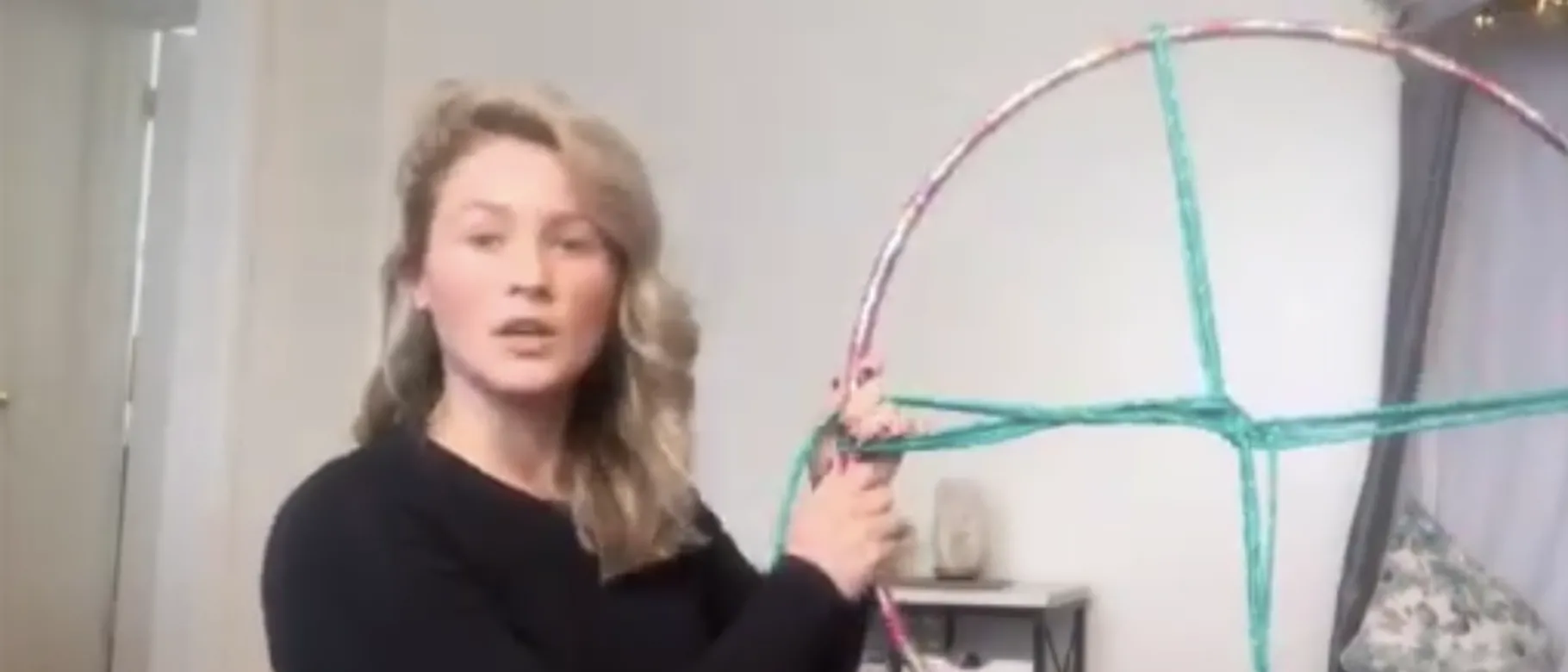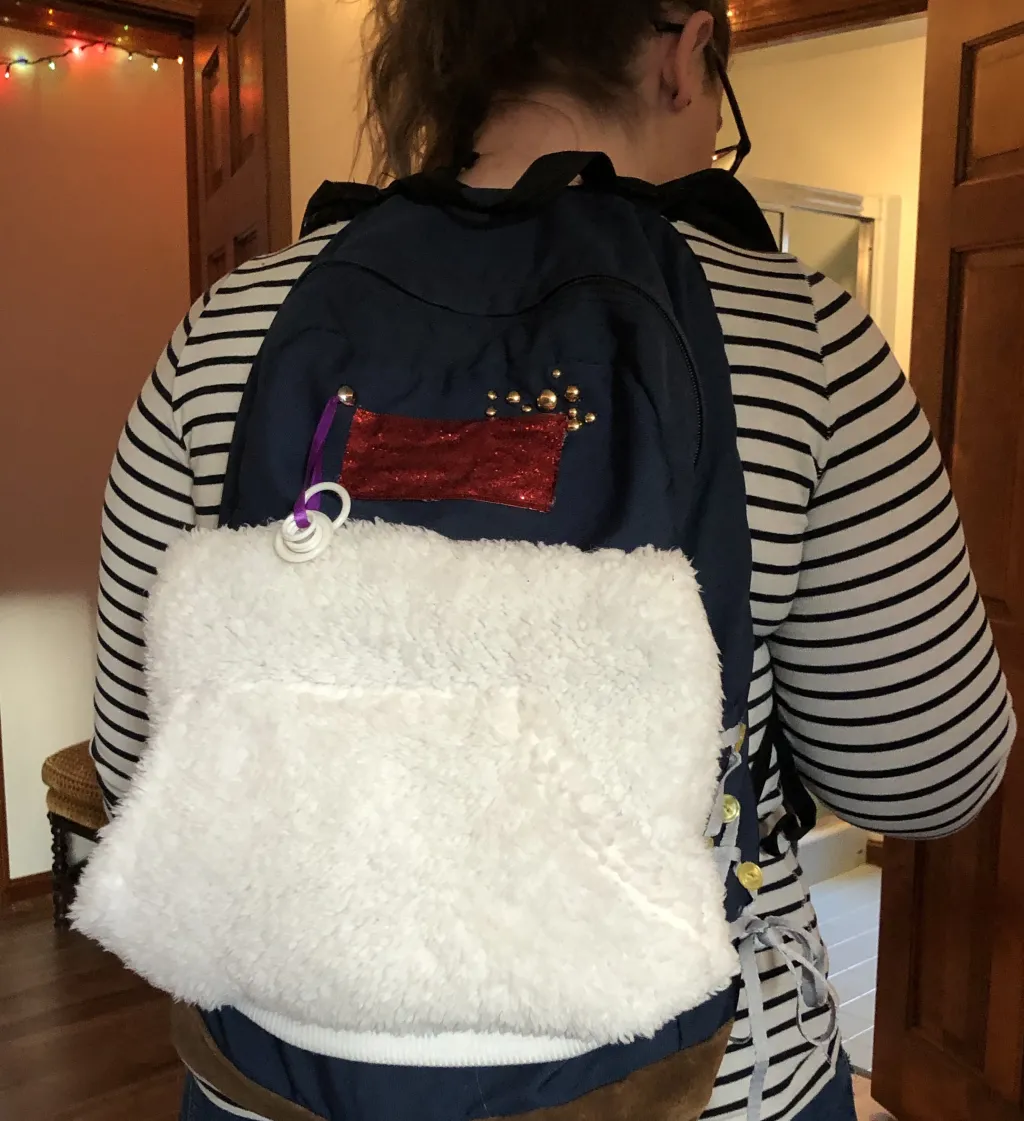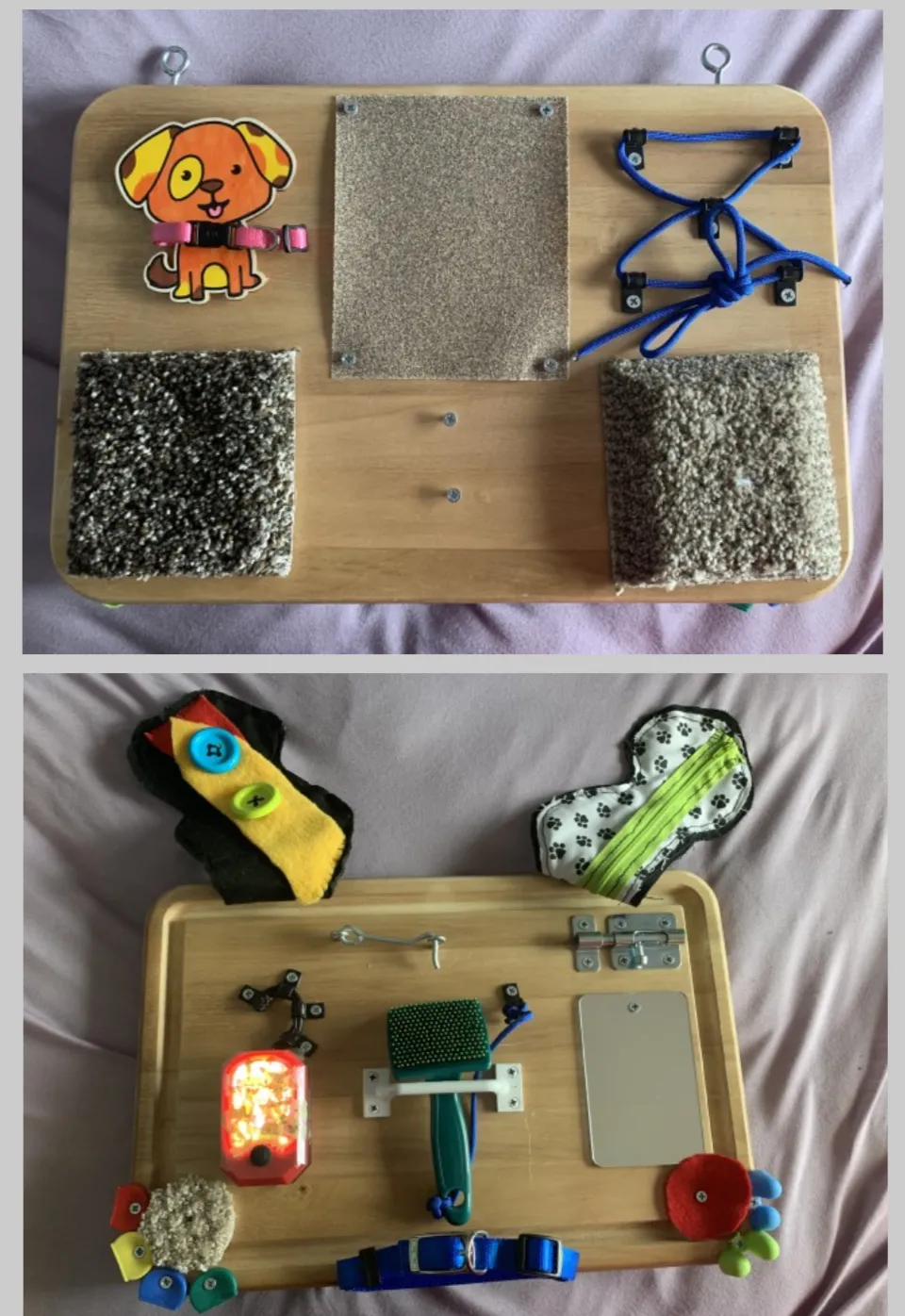Virtual autism exposition showcases OT students' innovation, compassion

More than 100 students, faculty, and community members fired up their webcams to attend the fourth annual combined Embracing the World of Autism and Adaptive Projects Expo from home on Thursday, April 23.
Sponsored by the University of New England’s Occupational Therapy program and the Maine Leadership Education in Neurodevelopmental and Related Disabilities (LEND), the annual exposition highlights evidence-based interventions for children and families living with autism spectrum disorder (ASD) and showcases the creative adaptive work of the University’s occupational therapy students.
This year’s event was moved online due to the ongoing coronavirus pandemic, but its digital replacement still afforded first-year Master of Science in Occupational Therapy (M.S.O.T.) students the opportunity to display their innovative creations.
Rather than set up display stations in Innovation Hall, as was originally planned, students filmed themselves from their homes and submitted their projects virtually. Their submissions were edited into one continuous video that was played over teleconferencing service Zoom.
Adaptive projects included sensory boards, light boxes, interactive instruction tools, dress-up instruments, fidget contraptions, and more. They will go on to be used by children at Portland Public Schools, Spurwink Services, the Morrison Center, and several additional community venues and homes in Maine and beyond.
“The annual expo is a project that embodies creativity, flexibility, and innovation to meet the needs of clients. In many respects, it mimics what occupational therapy practitioners do in their practice,” said Elizabeth Crampsey, Ed.D, M.S., OTR/L, BCPR, associate clinical professor of occupational therapy (OT). “This year, the students had to dig extra deep into their creativity due to geographic separation from one another as well as stay-at-home orders due to the pandemic.”
Bethany Gruskin, B.S., (M.S.O.T., ’21), who created a portable sensory board for her client, said it was important to hold the expo regardless of its digital constraints.
“Having this expo really fosters creativity and the client-centered approach that we are striving so hard to learn to do,” she said. “On the other side of that, we in OT spend a lot of time learning from each other. Having an expo where the community gets to come in, learn from us, and then offer their own insights into what we are doing is really important for our education.”
Gruskin’s project, “Explore with Me: A Portable Dog-Themed Sensory Board,” was created for a kindergartner, known as M, who lives near Gruskin’s hometown in New York state.
M has been diagnosed with autism spectrum disorder (ASD), and she is working with her occupational therapists to develop the fine motor skills needed to better play with her family’s two dogs. Additionally, M struggles to use her hands together to button, zip, and tie, which has led to a couple bathroom incidents at school.
Working with M and her occupational therapists, Gruskin designed the board to include sensory challenges that M could meet successfully, such as buckling and unbuckling dog collars, brushing fur, tying knots, fastening and unfastening buttons, and practicing zipping motions.
A sensory light box scattered with layers of dog-themed stickers forms an impromptu “I Spy” game for M — one of Gruskin’s favorite components. Additional tasks fixed to the board’s floppy “ears” challenge M to use both her hands at once to be successful.
M commutes nearly four hours to and from school with her father each day, so the board had to be portable, Gruskin said. Working with M’s occupational therapist by video chat and some in-person consultation during spring break, Gruskin designed the project to be used in various settings.
“We wanted to make that time constructive for her, to keep her engaged during that time and be doing something meaningful,” she said. “The board is portable enough to fit in M’s backpack, to be used in the car, to be used in a restaurant, and to go with her wherever she goes.”
That the students’ projects meet the needs of actual clients is why Crampsey said the expo is one of her favorite events each year.
“The majority of these projects fill a void in the community, so they are very meaningful both to students and the recipients,” she said. “The students rose to the challenge and have made myself, the UNE community, and the community at large incredibly proud.”
Helping fill the void is one of the reasons Gruskin said she sought out OT at UNE.
“Occupational therapy is about the ability to approach each client individually and holistically and to work on their everyday engagement and the things that they want to do,” she said. “For some people, that's playing guitar; for others, that's cooking a meal. You really have the opportunity to get to know your clients and to take an individualized approach.”
The exposition came toward the end of April, which is recognized as both World Autism Month and Occupational Therapy Month. Karen T. Pardue, Ph.D., M.S., RN, CNE, ANEF, dean of the Westbrook College of Health Professions, called the event a marker of the college’s interprofessional programs.
“This was not the event you envisioned at the beginning of the semester, but your flexibility and creativity are appreciated,” she told the students in attendance. “I realize you needed to adapt your projects to use materials you readily had on hand. You are already demonstrating the skills necessary to be occupational therapists.”
That sentiment was echoed by Kathryn Maiato, B.S. ’19 (Health, Wellness, and Occupational Studies), (M.S.O.T., ’21), who said the current pandemic situation has shown her and her classmates what it means to be adaptable as occupational therapists.
“Adapting and going with the flow is something that we will be doing every day as occupational therapists, and it is one of the things that I am looking forward to the most,” she said.
Maiato, a Rhode Island native, has created a “sensory break backpack” that she hopes will be used by students at North Smithfield Elementary School in her home state, where she completed her fieldwork rotation in March.
The backpack includes components for tactile exploration, including fluffy fabrics, fidget tools, raised surfaces, and a shoe-tying demonstration. Inside the bag are sensory bags with glitter and a sensory toolkit that contains fidget sticks and stress-relieving toys. The bag is also weighted, to help students with their proprioception, or sense of where their bodies are in space.
The sensory backpack was created with a specific child in mind, whom Maiato interacted with during her fieldwork experience, but was also designed to be used by all children in the classroom.
“Every child or patient is different, and what may work for one person doesn't work for another. That requires occupational therapists to critically think about what can be adapted and reworked in order to improve our client's occupational performance,” Maiato said.
Kris Winston, Ph.D., OTR/L, FAOTA, program director and associate professor of occupational therapy, praised the students for being so adaptable in creating their projects while still meeting the needs of their communities — what she called a glimpse into their future careers as occupational therapists.
“This is an opportunity for our students to apply their knowledge in creating solutions to barriers that prevent engagement in daily occupations including play, self-care, and education,” Winston said. “It is wonderful to see the collaboration between UNE and the community of practitioners and families in the state of Maine and beyond."

